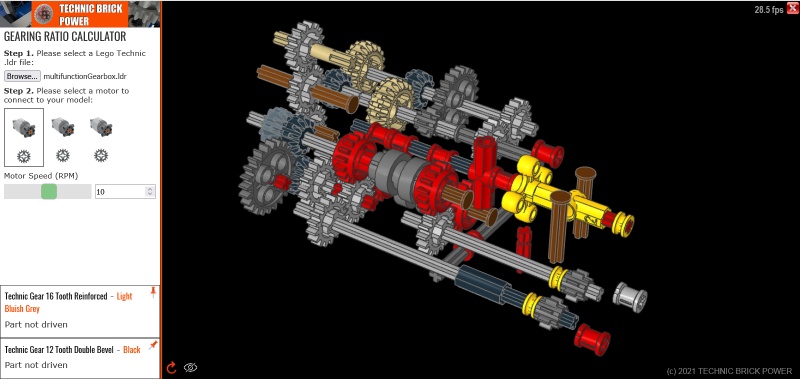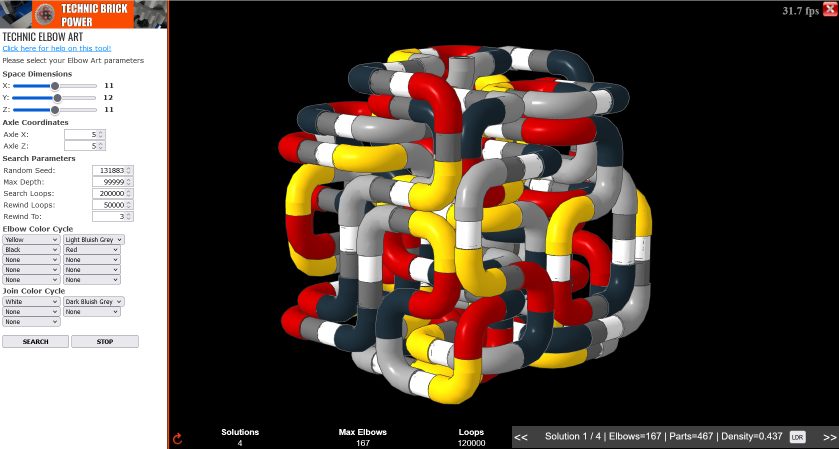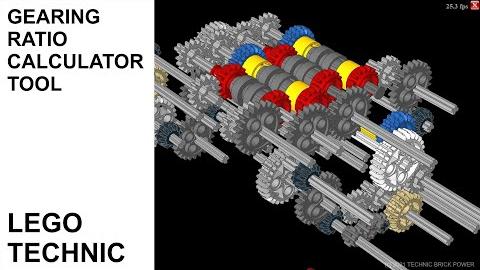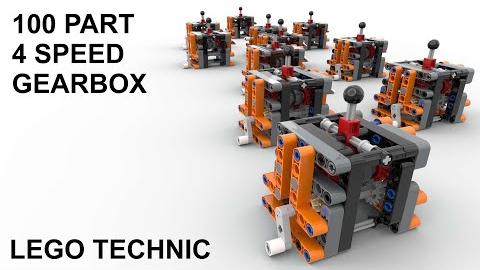How to create 7 to 1 Lego Technic Gear ratio without a Z28! Build instructions included.
Here I demonstrate how to approximate a 7 to 1 gear ratio using Lego Technic MOC without using a gear with a multiple of 7 teeth such as the Z28 double bevel released in 2019. Learn about and get inspired by gearing ratios!
More to explore
New Flat 12/20 Gear Friction
The Lego Technic set 42140 App-Controlled Transformation Vehicle introduces two new gears - a flat version of the 12 tooth bevel gear and a flat version of the 20 tooth bevel gear. These gears are designed to have less friction.
In this video I measure the difference in gearing efficiency...read more
Measuring Gearbox Efficiency
This video describes a method for measuring the efficiency of a gearbox using the Lego Technic Powered Up hub. Gearbox efficiency is defined as the ratio of the output power to the input power and here I show how to measure each of these values to allow you to calculate the overall efficiency.read more
How do you make a 1:N gearing ratio?
What is a gearing ratio?
Lego Technic Gearing Ratio Calculator Tool
Here I present my new Lego Technic Gearing Ratio Calculator tool. This tool allows you to upload your Lego Technic .ldr (Lego Draw) file and it will simulate the gearing system and visualize it as well as showing the gearing ratios relative to the input component.
The tool can be accessed...read more
Lego Technic PU 2 Speed Automatic Gearbox
This video presents a lego technic two speed automatic gearbox using two motors and the Powered Up (PU) lego technic control system. Each motor uses a pivoting gear to either connect to it's gear to the left when rotating in the forward direction or to the gear to the right when reversing. Th...read more
Lego Technic 100 Part 4 Speed Gearbox
This video shows how to make a Lego Technic 4 Speed gearbox using 100 parts. The gearbox is a manual gearbox makes gearing ratios of 1/3, 5/9, 1/1 and 5/3.
The gearbox is demonstrated by hand and by using a Lego Technic Large Power functions motor.
...read more





